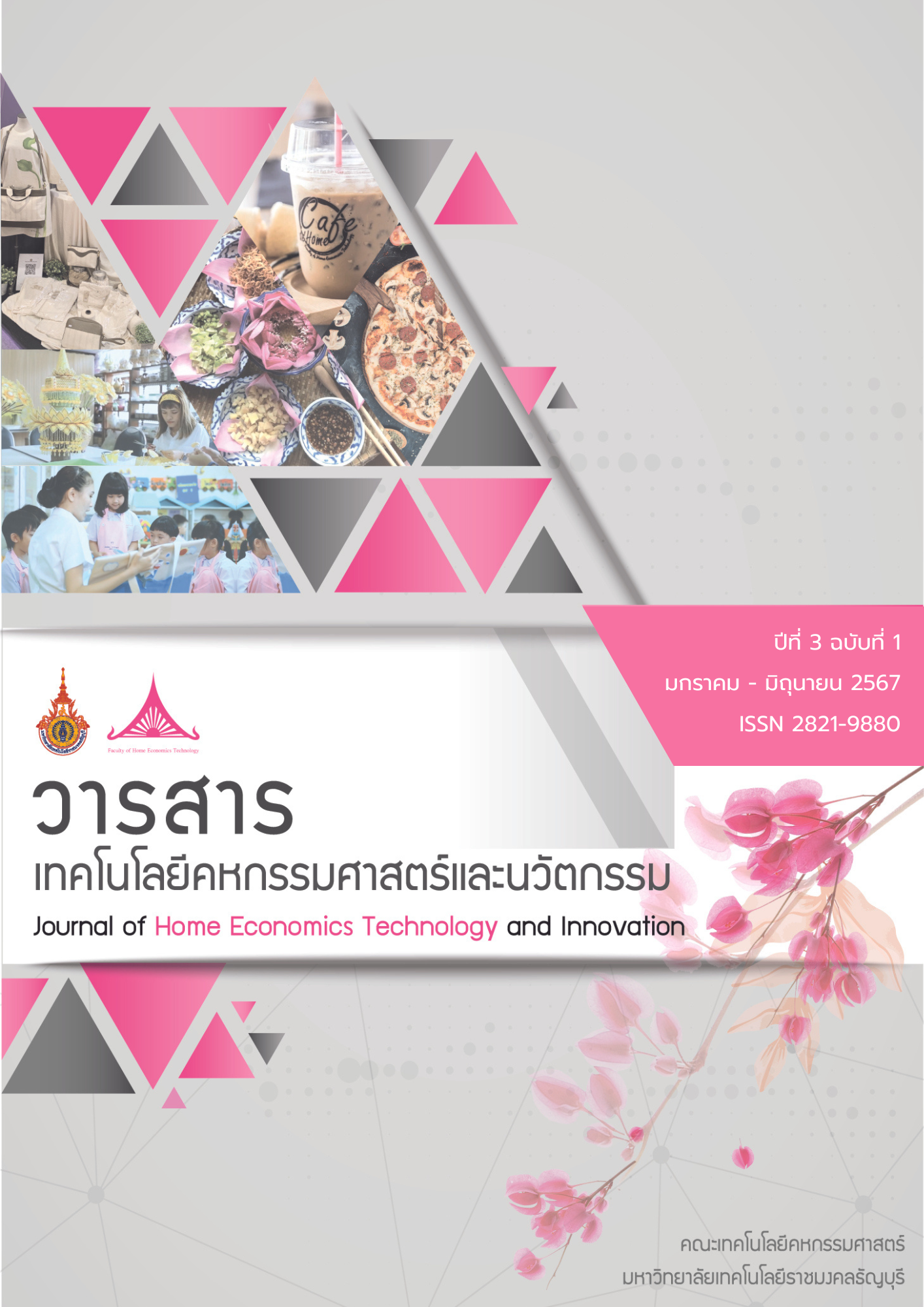จุลินทรีย์ก่อโรคในอาหาร
Main Article Content
บทคัดย่อ
โรคในระบบทางเดินอาหาร เป็นโรคที่พบได้บ่อยมากในคนทั่วไป แม้ว่าอาการอาจจะไม่รุนแรง แต่เป็นปัญหาในการดำเนินชีวิตประจำวัน เกิดขึ้นได้จากหลากหลายสาเหตุ แต่ที่พบได้บ่อยสุดเกิดจากการรับประทานอาหารและน้ำดื่ม ปนเปื้อนจุลินทรีย์ก่อโรค เมื่อเชื้อเจริญในระบบทางเดินอาหารจะก่อให้เกิดการอักเสบหรือระคายเคืองต่อเยื่อบุลําไส้ และหากเชื้อสร้างสารพิษออกมาจะทำให้โรครุนแรงขึ้น โดยทั่วไปผู้ป่วยจะมีอาการเป็นไข้ ปวดท้อง ท้องร่วง และอาจมีมูกเลือดปนมากับอุจจาระ จุลินทรีย์ก่อโรคที่พบแพร่ระบาด ได้แก่ Staphylococcus aureus, Clostridium perfringens, Clostridium botulinum, Shigella spp., Salmonella typhimurium, Salmonella typhi, Campylobacter jejuni, Listeria monocytogenes, Campylobacter coli และ Escherichia coli สำหรับการป้องกันแนะนําให้ประชาชนหมั่นล้างมือ ใช้น้ำสะอาดในการปรุงอาหาร และล้างอุปกรณ์ให้สะอาด รวมทั้งไม่ควรนําสัตว์ที่เป็นโรคมาแปรรูปเป็นผลิตภัณฑ์อาหาร การตรวจสอบจุลินทรีย์ก่อโรคนิยมใช้วิธีการเพาะเลี้ยงเชื้อในอาหาร เทคนิคทางชีวโมเลกุล และวิธีทางภูมิคุ้มกันวิทยา
Article Details
บทความที่ได้รับการตีพิมพ์เป็นลิขสิทธิ์ของวารสารเทคโนโลยีคหกรรมศาสตร์และนวัตกรรม มหาวิทยาลัยเทคโนโลยีราชมงคลธัญบุรี ข้อความที่ปรากฏในบทความแต่ละเรื่องในวารสารวิชาการเล่มนี้เป็นความคิดเห็นส่วนตัวของผู้เขียนแต่ละท่านไม่เกี่ยวข้องกับมหาวิทยาลัยเทคโนโลยีราชมงคลธัญบุรีและคณาจารย์ท่านอื่นๆในมหาวิทยาลัยฯ แต่อย่างใด ความรับผิดชอบองค์ประกอบทั้งหมดของบทความแต่ละเรื่องเป็นของผู้เขียนแต่ละท่าน หากมีความผิดพลาดใดๆ ผู้เขียนแต่ละท่านจะรับผิดชอบบทความของตนเองแต่ผู้เดียว
เอกสารอ้างอิง
ชมภู่ ยิ้มโต. (2558). จุลชีววิทยาทางอาหาร. บริษัท ทริปเพิ้ล เอ็ดดูเคชั่น จำกัด, กรุงเทพฯ.
ทวิติยา สุจริตรักษ์. มปป. อหิวาตกโรค…โรคร้ายที่มากับอาหารและน้ำ. คณะแพทยศาสตร์ มหาวิทยาลัยเชียงใหม่. แหล่งที่มา:https://www.pidst.or.th/A463.html, 25 เมษายน 2567.
พิมพ์เพ็ญ พรเฉลิมพงศ์ และ นิธิยา รัตนาปนนท์. (มปป.) Food hazard / อันตรายในอาหาร. แหล่งที่มา: https://www.foodnetworksolution.com/wiki/word/002018/food-hazard -อันตรายในอาหาร. 24 เมษายน 2567.
ภาวิน ผดุงทศ. (2547). แบคทีเรียกอโรคในอาหาร. เชียงใหมสัตวแพทยสาร, 2 (1), 51-65. สำนักสุขาภิบาลอาหารและน้ำ กรมอนามัย กระทรวงสาธารณสุข. (2557). (พิมพ์ครั้งที่ 2). คู่มือการปฏิบัติงานด้านสุขาภิบาลอาหารและน้ำ. โรงพิมพ์ชุมนุมสหกรณ์การเกษตรแห่งประเทศไทย จำกัด, นนทบุรี. 52 น.
Allerberger, F. and Wagner, M. (2010). Listeriosis: A resurgent foodborne infection. Clinical Microbiology and
Infection, 16: 16–23.
Al–Saed, A. K., Al–Groum, R. M., and Al– Dabbas, M. M. (2012). Implementation of hazard analysis critical control point in jameed production. Food Science and Technology International, 18(3): 229-239.
Argudin, M. A., Mendoza, M. C., and Rodicio, M. R. (2010). Food poisoning and Staphylococcus aureus enterotoxins. Toxins, 2: 1751-1773.
Bortolussi, R. (2008). Listeriosis: A primer. Canadian Medical Association Journal, 179(8): 795-797.
Boyle, E. C., Bishop, J. L., Grassl, G. A., and Finlay, B. B. (2007). Salmonella: from pathogenesis to therapeutics. Journal of Bacteriology, 189(5): 1489-1495.
Foley, J., and Lynne, A. M. (2008). Food animal associated Salmonella challenges: pathogenicity and antimicrobial resistance. Journal of Animal Science, 86: 173-187.
Food and Drug Administration-FDA. (2012). Bad Bug Book: Handbook of Foodborne Pathogenic Microorganisms and Natural Toxins. (2 Eds). Retrieved February 6, 2014, from http://www.fda.gov/downloads/Food/FoodborneIllnessContaminants/UCM297627.pdf
Freedman, J. C., Shrestha, A., and McClane, B. A. (2016). Clostridium perfringens enterotoxin: action, genetics, and translational application. Toxin, 8(3): 73.
Grimont, P., and Weill, F. (2007). Antigenic Formulae of the Salmonella Serovars. 9th ed. Paris: World Health Organization Collaborating Centre for Reference and Research on Salmonella, Pasteur Institute.
Kendall, P. (2012). Bacterial foodborne illness, Colorado State University, No. 9.300. Retrieved January 31, 2014, from https://shorturl.asia/xnkKJ
Madigan, M. T., Martinko, J. M., and Parker, J. (2003). Brock’s Biology of Microorganisms. New Jersey: Pearson Education.
Mahon, C. R., Lehman, D. C., and Manuselis, G. (2007). Textbook of Diagnostic Microbiology. St. Louis, MO: Saunders Elsevier.
Pommerville, J. C. (2011). Alcamo’s Fundamentals of Microbiology. 9th ed. Massachusetts: Jones and Bartlett.
Rangel, J. M., Sparling, P. H., Crowe, C., Griffin, P. M., Swerdlow, D. L. (2005). Epidemiology of Escherichia coli O157:H7 outbreaks, United States, 1982–2002. Emerging Infectious Diseases, 11(4): 603–609.
Ray, B. & Bhunia, A. (2014). Fundamental Food Microbiology. (5 Eds). Florida: Taylor & Francis.
Scallan, E., Hoekstra, R. M., Angulo, F. J.,Tauxe, R. V., Widdowson, M. A., Roy, S.L., Jones, J. L., and Griffin, P. M. (2011). Foodborne illness acquired in the United States Major pathogens. Emerging Infectious Diseases. 17: 7–15.
Willey, J. M., Sherwood, L. M., and Woolverton, C. J. (2009). Prescott’s Principles of Microbiology. New York: McGraw–Hill.


